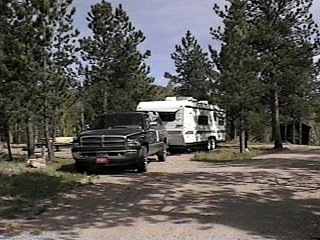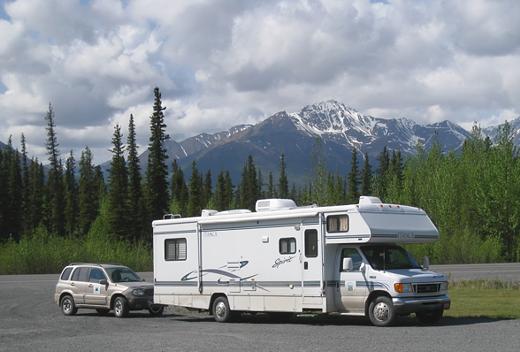Tips for Dealing with Gas Prices
Whether you drive a motorhome, truck, SUV, or sedan, gas prices impact your vacation by emptying your wallet. The following are suggestions provided in a summer 2008 (remember gas topped $4 per gallon) Highways magazine. Highways is a magazine for recreational vehcile (RV) travelers but their suggestions should help all drivers.
 1. Follow the manufacturer’s engine-maintenance schedule. Replacing air and fuel filters can improve mileage. When its time for a tune-up invest in premium long-life iridium or platinum-tip spark plugs. Have spark-plug wire checked. Spark-plug wires deteriorate quickly under high-heat conditions which reduces power and efficiency.
1. Follow the manufacturer’s engine-maintenance schedule. Replacing air and fuel filters can improve mileage. When its time for a tune-up invest in premium long-life iridium or platinum-tip spark plugs. Have spark-plug wire checked. Spark-plug wires deteriorate quickly under high-heat conditions which reduces power and efficiency.
2. When changing motor oil, look for products that have the American Petroleum Institute (API) symbol “Energy Conserving” for friction-reducing additives. Give synthetic oils serious consideration. Contrary to old-mechanics’ tales, you can switch engine, transmission and differentialial to synthetic oil at any time (just be sure to follow the manufacturer’s recommendations for grade, viscosity, and change intervals) and benefit from reduced friction and fuel consumption.
3. Friction is a huge stealer of gas mileage. Check for misadjusted wheel bearings and dragging brakes.
4. Speaking of friction, did you know radial tires typically have less “rolling resistance” (a.k.a. friction) than bias-ply tires and highway treads “roll” better than mud-and-snow tires? Keep tires inflated properly and check pressure often. Cold temperatures and descending from altitudes will decrease tire pressure and add rolling resistance. FYI-According to tire industry experts, fuel mileage can slip by 0.4% for every 1-psi drop in tire pressure.
 5. Towing also has a significant affect on mileage. Keep it as light as possible to help retain your fuel consumption level.
5. Towing also has a significant affect on mileage. Keep it as light as possible to help retain your fuel consumption level.
6. Unnecessary weight also adds to your “rolling resistance.” Check for unneeded items in your vehicles and leave them at home. Probably a motorhome’s first candidate for jettison is freshwater. Water weights is 8.2 pounds per gallon so carrying 10 gallons (82 lbs) will produce less “rolling resistance” than a full freshwater tank of 40 gallons (328 lbs).
7. While a manual transmission usually gets better mileage than an automatic, the greater number of forward gears in an automatic transmission will also give you better mileage.
8. Long periods of warming up can be a mileage killer and it’s not necessary. Start your engine and let it idle for a minute or so to circulated the oil thoroughly, then drive conservatively until the engine is warmed up, or your temperature gauge indicates “normal” range, before going full throttle.
9. Higher octane won’t increase power, mileage, or engine longevity – go with the fuel grade recommended in your owner’s manual.
10. Keep a log and use it. You’ll be able to compare changes in driving styles, fuel manufactures, road conditions, whatever you want to track. It is also a good “early-warning” method when your miles-per-gallon drops.
11. Storage pods, roof racks, anything that compromises your vehicle’s aerodynamic profile should, if possible, be illuminated.
12. Plan your route carefully. Avoid rush hour traffic and check with the highway department for information on road closure, construction or detours.
By the way, the internet is a good source for finding the lowest gas price in an area. Check www.gasbuddy.com or www.gaspricewatch.com for information. Remember, these sites are only as current as the updated information provided by consumers.






